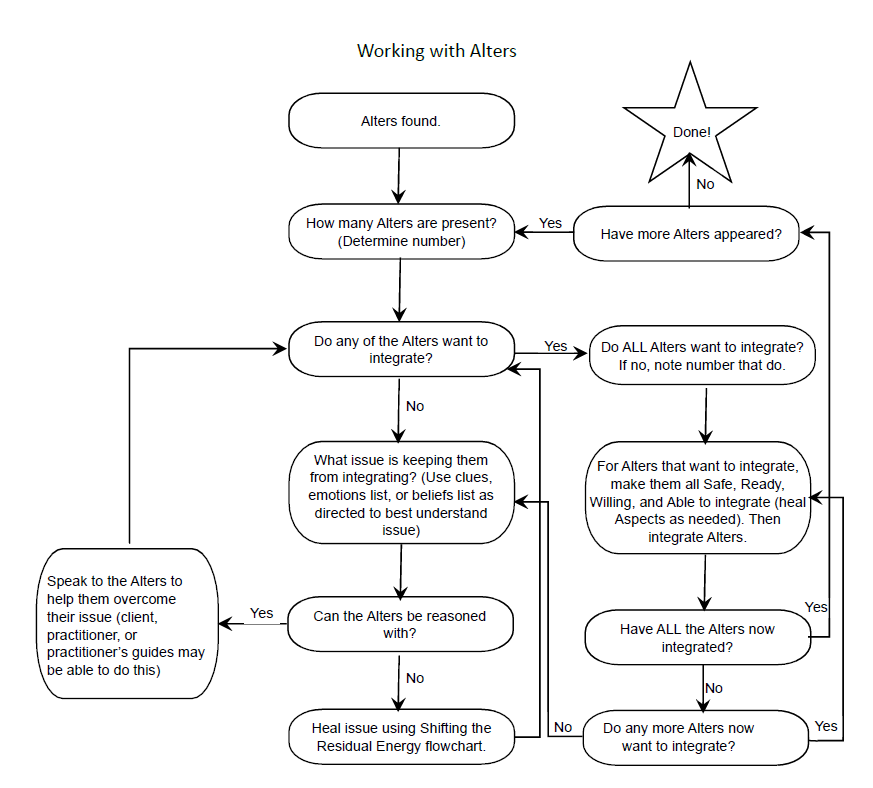¶ Alters
¶ What are they
working_with_alters_flowchart.pdf
Alters
In discussing Parts within the framework of ART, I expressed how, at their foundation, they energetically explained what was going on in individuals with Dissociative Identity Disorder.
Parts are fragments that do not have enough energy to take over the main personality, which is one of the hallmarks of DID. Those fragments are
referred to as Alters.
We know that Parts will readily integrate when healed appropriately. Alters, however, may hide in the background if they do not feel safe to be seen, in which case you will not know that they exist, and may outright refuse to be healed. They view themselves as separate and distinct individuals from the client, and in many cases do not trust that the client has the capacity to
take care of them, which is why they refuse to be integrated back into the whole. Tread lightly with Alters as they are always a product of trauma, and they may be volatile.
¶ How to heal
Working with Alters
Early on, when you determine that you need to work with Alters, it may be helpful to find out the number that have surfaced as it will give you an idea of the scope of what you are working with.
- Determine if all of the Alters found have an interest in integrating with the client
a. If yes, make sure that they are safe, ready, willing, and able to integrate. Integrate
them, and then you are done.
b. If no, determine how many do not wish to integrate with the client (I refer to these as dominant Alters and identify each by age); then determine if there are other Alters who would be interested in integrating with either the client or one of the dominant Alters.
i. If there are some that are interested, make them safe, ready, willing, and
able to integrate, and then integrate them. (You can work with them all
simultaneously…each Alter knows where it will integrate)
ii. Ask “now that everyone has seen these Alters integrate with others, is
there anyone else who would be interested?”. You may find that more
Alters now feel safe to surface because they saw their “friends” join with
others.
iii. Repeat i. and ii. until no more appear. - Check if any of the dominant Alters have changed their minds about integrating with either the client or one of the other dominant Alters. Make them safe, ready, willing,and able to integrate, and then integrate them as they have chosen. Repeat until no Alters remain, or until the remaining Alters do not wish to integrate with each other or the client
- For remaining Alters, find out how they are feeling (i.e. What emotions are they holding
onto that they need to let go of before they will consider integrating?). Use the emotions
list or the clues list, as guided. (usually 1 or 2 emotions) - Once you know how the Alters are feeling, ask if the client can talk through the
emotions with the Alter, or if the Alter requires the emotions to be healed.
a. If the emotions can be talked through, the practitioner or the client should proceed to reason with the Alter and explain why those emotions are no longer necessary. Remember, speak as though you are talking to a person (typically a child) standing in front of you! They need reassurance that the client loves and is going to take care of them. (Or for particularly “know-it-all” children, defer to them and say that the client needs their help)
b. If the emotions require healing, use the upgraded Create New Reality flowchart (Addressing the Residue) to heal the emotions. Once those are healed, the Alter will be interested in integrating.
